writer's block debunked
an exploration of the nine muses !
We all know about writer’s block, and most of us would kill for a quick fix for this common problem which affects almost all creators. Luckily, the ancient Greeks had a simple hack for this affliction: nine divine sisters who whispered inspiration into the ears of writers, poets and artists.
Even today people can be heard complaining that they’re ‘waiting for their muse’ when embarking on artistic endeavours; I know I’ve cursed and ranted at mine (or lack of) when inspiration hasn’t been flowing as easily as I’d like.
So what is a muse? And who were these divine sisters?
A muse can be broadly defined as someone who is the source of creative inspiration for a creative, but the more interesting definition is that the Muses are nine goddesses: the daughters of Zeus and Mnemosyne, who preside over the arts and sciences. We’re going to be discussing the latter definition today (surprise, surprise), and exploring each of these nine divas in more unhinged detail.
Before I start it’s worth noting that Herodotus’ Histories were named after each of the nine Muses. A fun fact which I hadn’t known before!
Calliope – muse of epic poetry
According to Hesiod’s Theogony, Calliope was the ‘foremost’ of the nine muses, and this seems to have remained true through the ages. Calliope is without a doubt the most well-known of the Muses, having been portrayed in modern media more times than any of her eight sisters, and is also said to have inspired Homer’s Odyssey. You can see Homer depicted in the background of Meyneir’s painting!
In Greek mythology one time Calliope had to sort out an argument between Persephone and Aphrodite over Adonis (yikes), because they were both in love with him but couldn’t decide who should ‘get’ him.
Not their finest moment. I can’t imagine Adonis was at any point conferred with during this argument, and he probably would have been too afraid to speak if he was. So P&A took their quarrel to Zeus, who was also too afraid to speak, so passed the task onto Calliope. What a man.
Calliope (presumably using Persephone’s own predicament to help her decision) decided that Adonis should spend four months with Persephone, and four months with Aphrodite. With the other four months, he’d be allowed to do whatever he wanted. Lucky him!
Aphrodite still wasn’t too happy with this arrangement, and so, blaming Calliope, she ordered the Thracian women to kill Orpheus, Calliope’s son. Yes, apparently she was Orpheus’ mother, and she also is said to have had two children by the god Apollo.
In essence, Calliope had a jam-packed social calendar compared to her more introverted sisters.
Clio – muse of history
A guide to researching Clio:
1) Google Clio
2) See this picture of her fresco at Pompeii and go down a ninety-minute rabbit hole looking at pictures of ancient Pompeiian discoveries
3) Think you should probably get a tattoo of one of these because they’re so freaking cool
Thank you for coming to my TED talk.
I can’t talk about Pompeii right now because this will turn into a whole different article, but have a look at the frescos of Apollo and the Muses they found there. I’ll never ever ever shut up about Pompeii it’s too cool unfortunately.
Anyway, Clio had a son called Hyacinth, who you might know because he was famously Apollo’s lover, and was also accidentally killed by Apollo while playing a game of frisbee. Bad form from a literal god there. Another interpretation is that Zephyrus (the West wind, obviously) was a previous lover of Hyacinth’s, and killed him out of jealousy because he chose Apollo over him.
Clio is the ‘proclaimer, glorifier and celebrator of history, great deeds and accomplishments,’ and her name is used in various modern brands, including the Clio Awards for excellence in advertising.
Polyhymnia – muse of hymn (but also maybe dance?)
Here she is throwing some absolute shapes. This painting is oddly terrifying but also hilarious, I’m not sure how I feel about it.
I also cannot for the life of me work out what this woman is supposed to be the muse of. Someone says geometry? Why do we need a muse for geometry? Meynier calls her the muse of ‘eloquence’ above… I’m confused. What I do know is that Homer is in the background here again!
She’s not huge on actually being in any Greek myths (she had a son who was a first priest of Demeter?) but she looks great and is doing some groovy dance moves, so there’s that.
Euterpe – muse of the flute
(these frescoes are so cool I’m going to put my head through a wall look how well preserved and detailed they are)
You’ll never guess what Euterpe, muse of the flute, is credited with having created guys. It’s a real wild card.
I’m joking. The flute… it’s the flute.
More specifically the aulos, or double-flute, and Euterpe is most often depicted holding or playing her creation. If you’re a musician looking for divine inspiration, she’s your gal.
Terpsichore – muse of dance and chorus
Another muse of dance!? Stick with me, I’m as confused as you are, but there’s still loads of cool art and depictions to see so we’re ploughing on in the name of discovering cool paintings, statues and Pompeiian frescoes.
Terpsichore can often be found depicted sat down (me too bestie) playing the lyre in accompaniment to the choir with her music. She also gives us the English word ‘terpsichorean’ which means ‘relating to dancing,’ which I didn’t know before today.
Erato – muse of lyrical/erotic poetry
Now we’re talking. Erato’s just kicked down the door and said, ‘put your flute down and listen to this filthy poem I just wrote.’ She can sometimes be found depicted with a golden arrow which symbolises ‘eros’ (sexual love), the feeling she invokes, or sometimes actually accompanied by Eros, as seen above. I really like this one, well done Charles.
I’ve just googled why Meynier loved painting the muses so much, and he was actually commissioned to paint all nine of them for some posh bloke’s dining room, but only managed Calliope, Clio, Polyhymnia and Erato before his patron ran out of money.
Woops.
Melpomene – muse of tragedy
Melpomene (resident sad girl) is often depicted with a(n often terrifying) tragic mask, scrolls and a crown of leaves. She was described by an Italian iconographer as: “a gentlewoman all in mourning; she holds a bloody dagger in her right hand; behind her, upon the ground, a garment of cloth of gold, and diverse precious jewels; shod with cothurni.”
The oldest known portrait of Virgil, a mosaic dated back to the first century, depicts him sat between Clio and Melpomene, which has been interpreted as a commentary on the similarities of recording history and writing fictional works of tragedy. Very cool!
Thalia – muse of comedy
Onto my personal favourite now, Thalia is often depicted as a young woman with a joyous air, holding a comic mask in her hand, the direct opposite of her sad sister Melpomene. Many of her statues also hold a bugle or a trumpet, or, randomly, a shepherd’s staff.
Urania – muse of astronomy, astrology and space
Last but not least, Urania is usually depicted with a celestial globe to which she points with a small staff, and more often than not can be found gazing up to the heavens, which is a cool little detail. In this one she’s wearing a headband of stars, which gives her away as the muse of astronomy. She’s also leaning back on her big ol’ celestial orb, using it as a sort of beanbag, which I absolutely adore.
Urania is the namesake for astronomical observatories across Europe, and the main belt asteroid Urania was also named after her. A fine example of how ancient Greek mythology is still relevant today which makes me feel like crying happy tears a little bit.
SOME (more) ART
You can never have enough.
Check out this article from 2020 for loads more depictions of all the muses together - if I tried to do them all justice here we’d all be here for hours.
Also, it’s worth pointing out that that article names Polyhymnia as the muse of grapes and agriculture. Who is that woman????
THE END
That’s it from me today! Once again, I’m so sorry to my email users. I can never help myself with the length of these newsletters.
I hope you had as much fun reading this one as I had writing it, I’ve loved learning about the different muses over the past week, and how to differentiate them in art! Now I just need to wait for some very niche pub quiz questions.
Until next time💗🏺


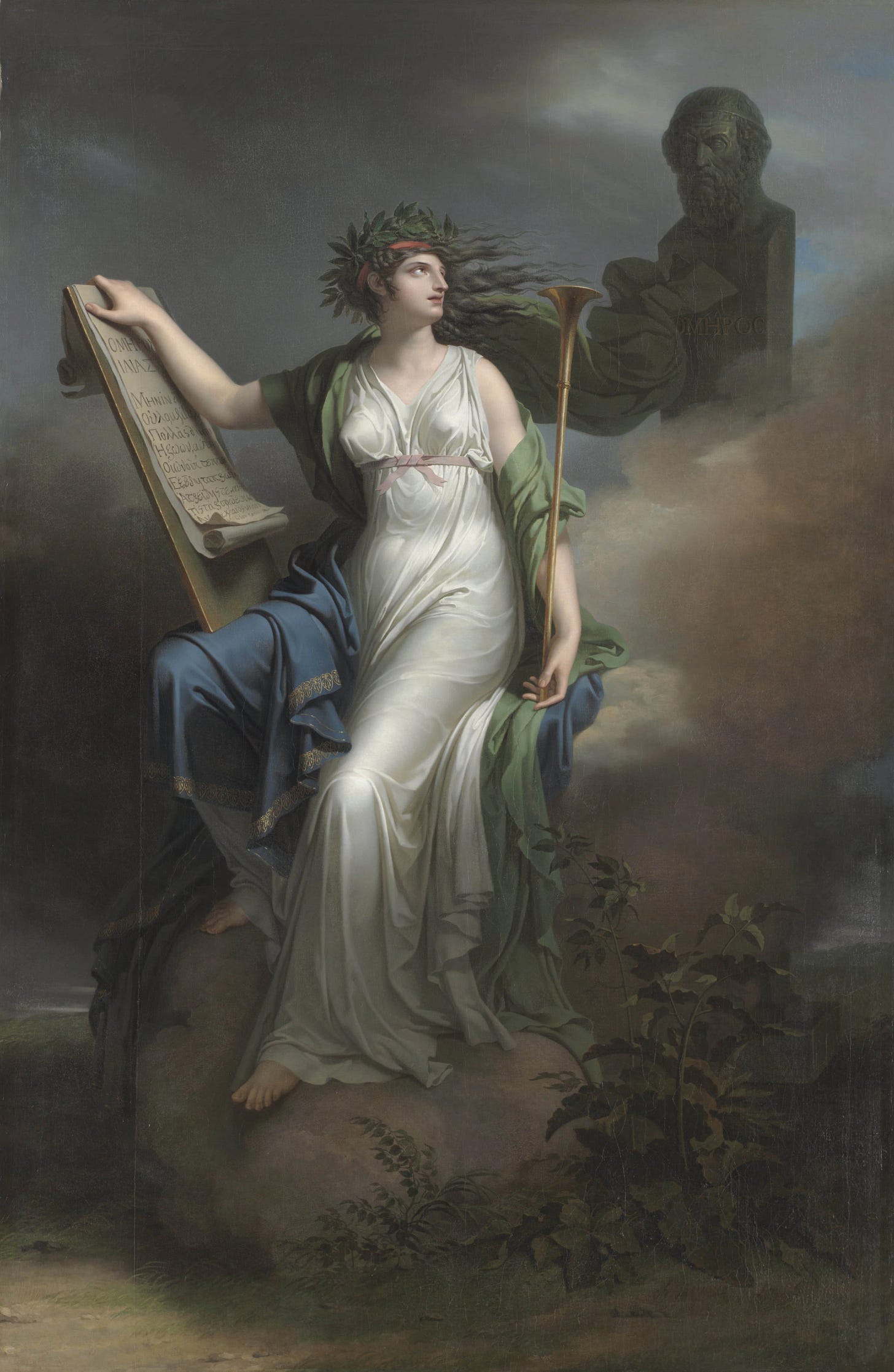





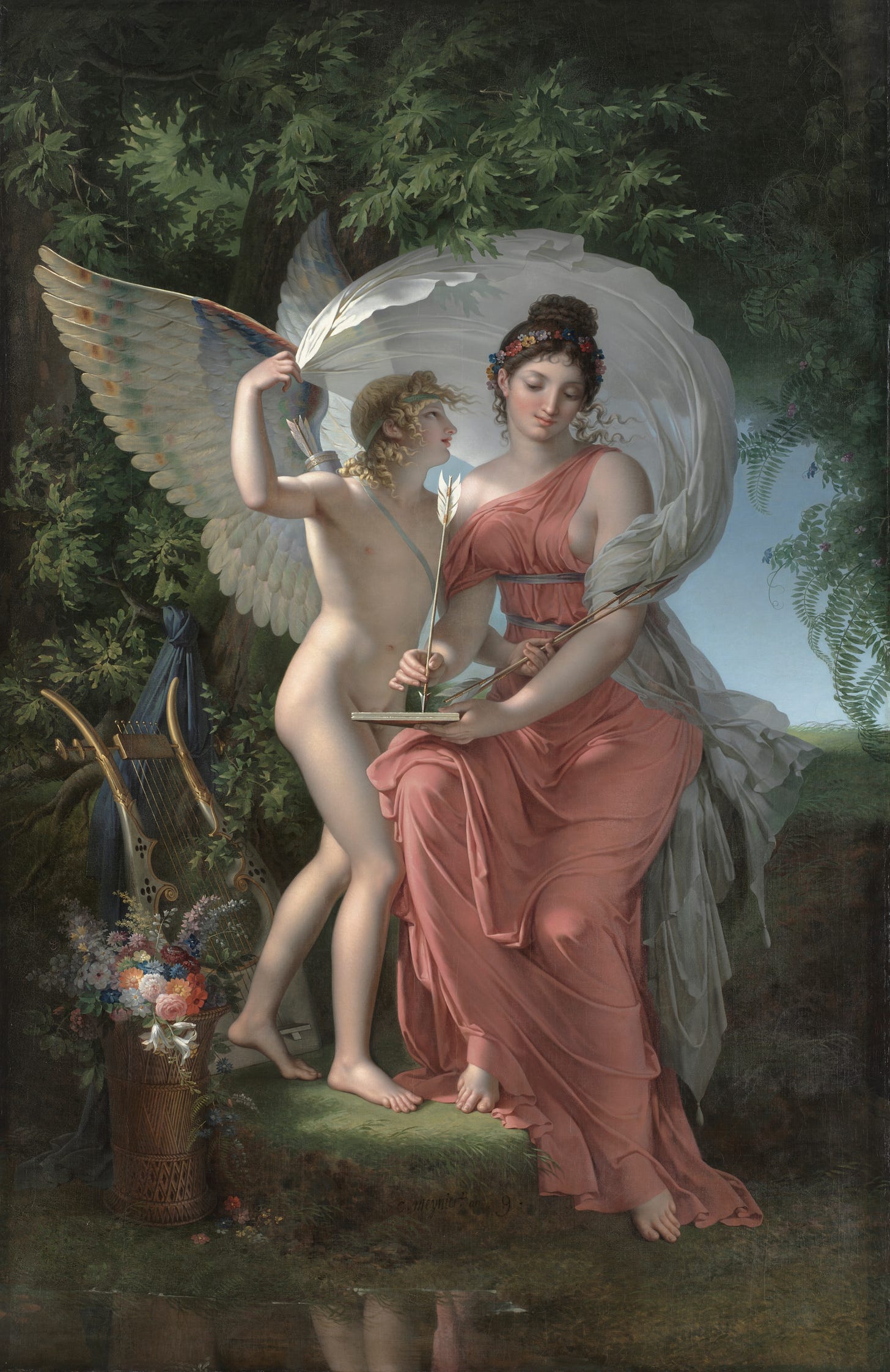

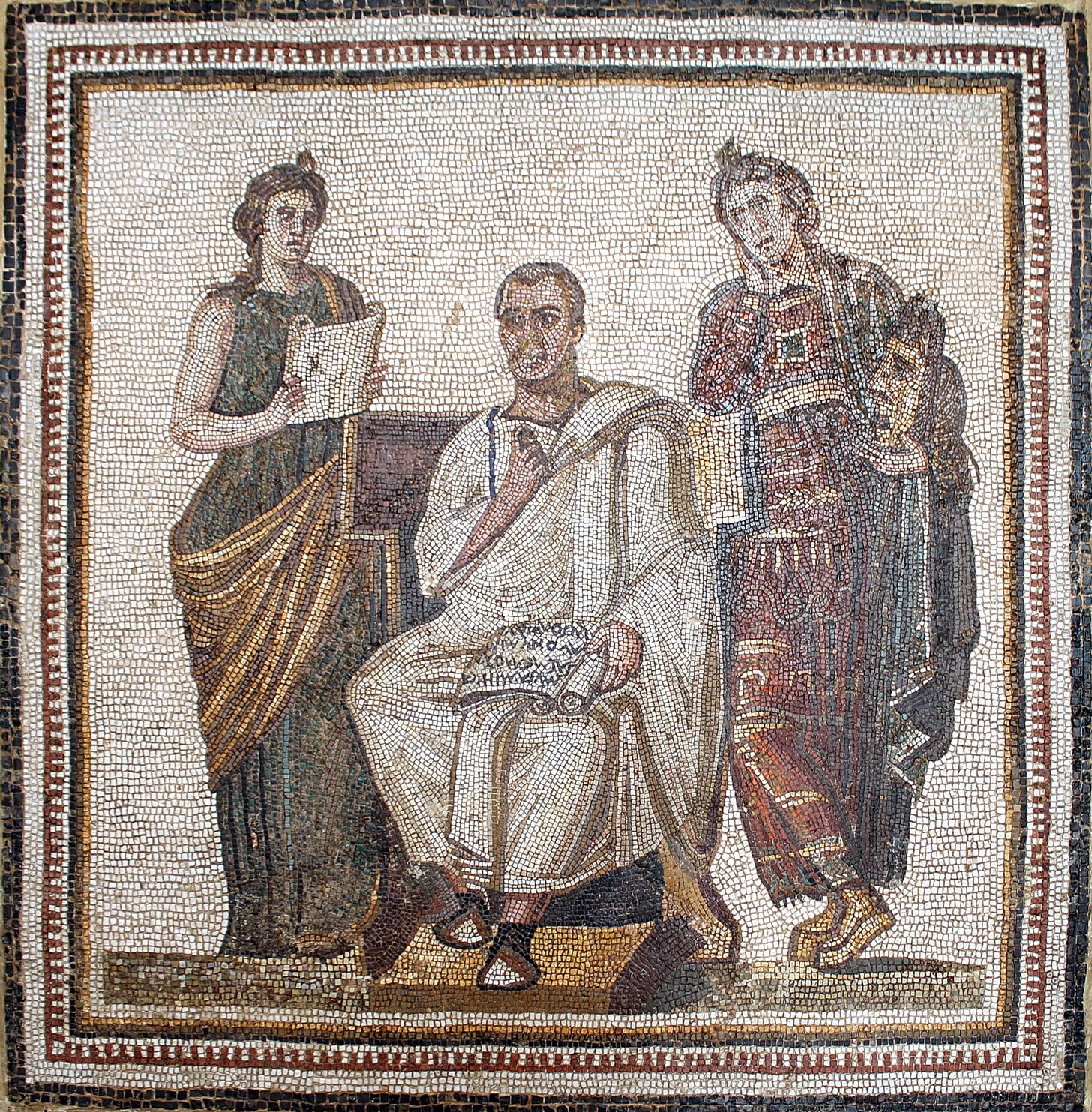
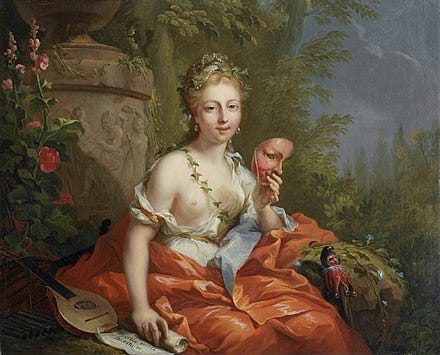
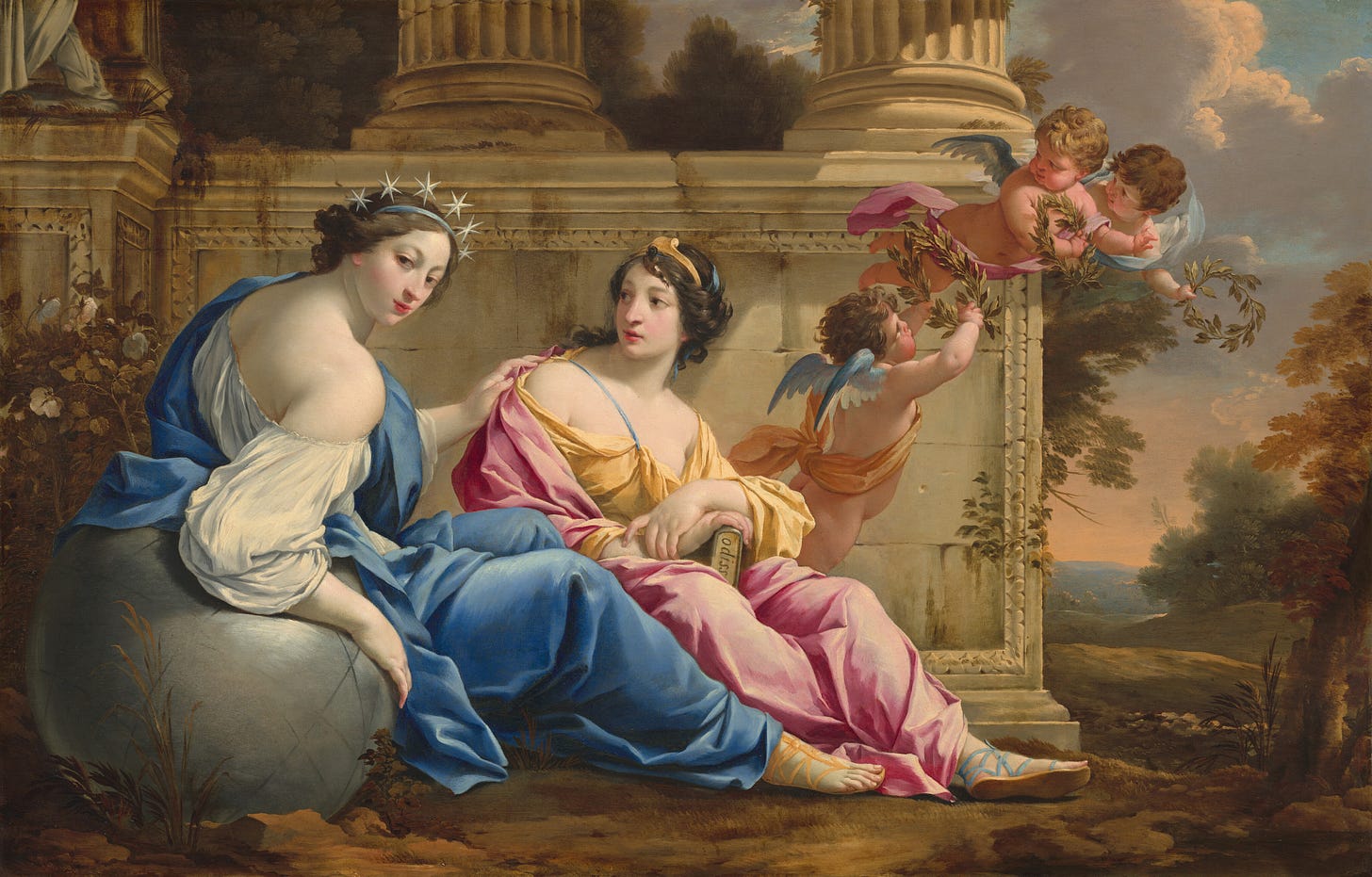

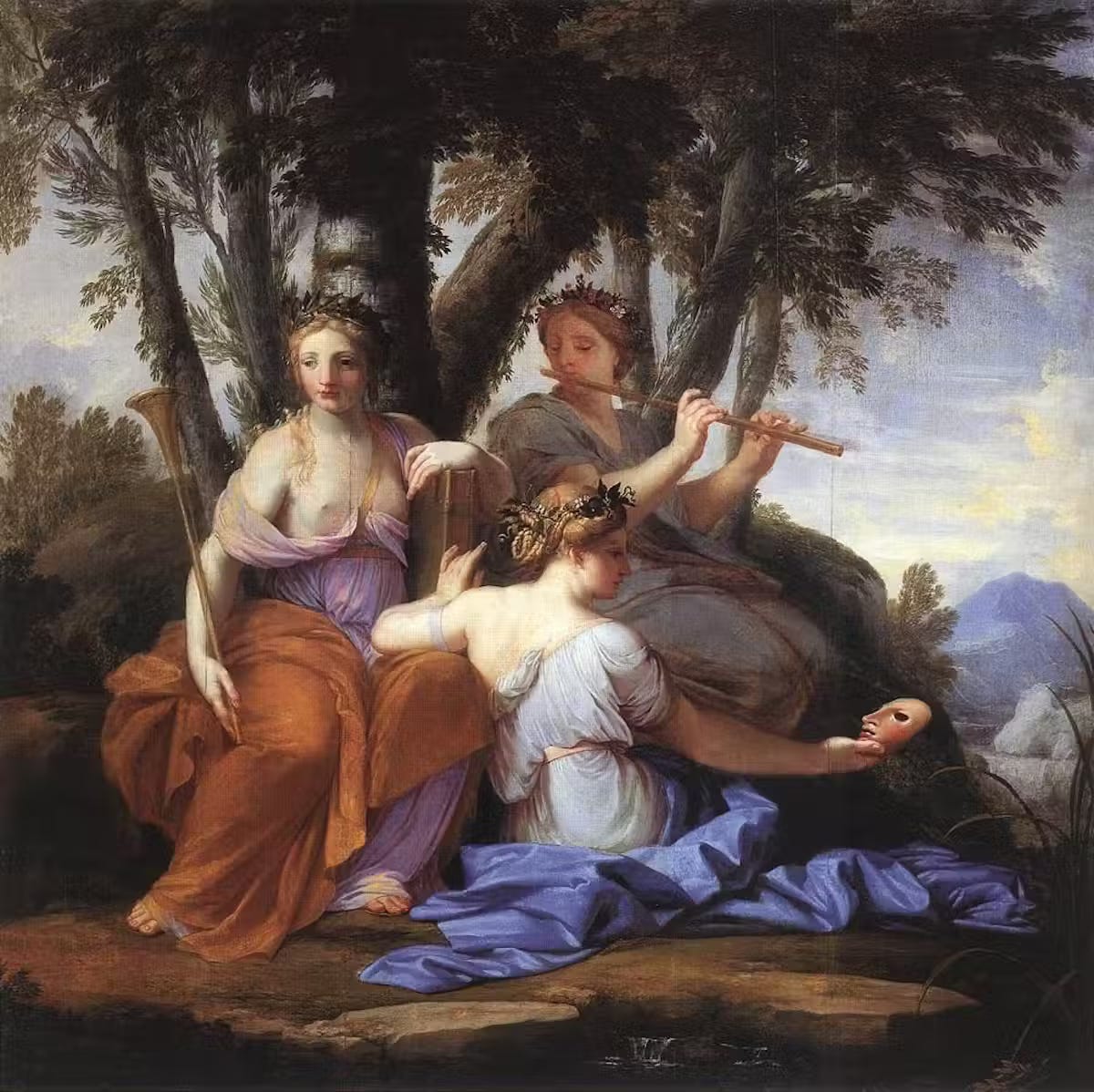

Wonderful!
This was an utterly delightful read. Thank you for delving into the Muses for us! I want to know everything about them now.